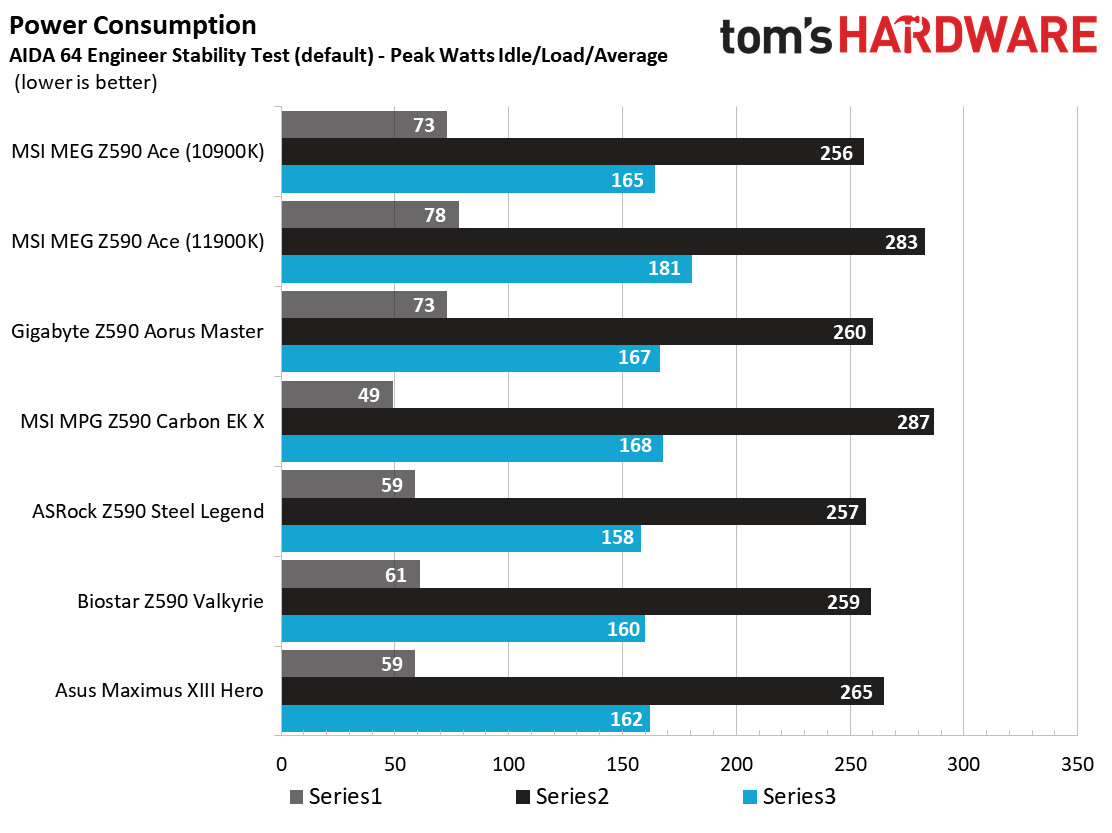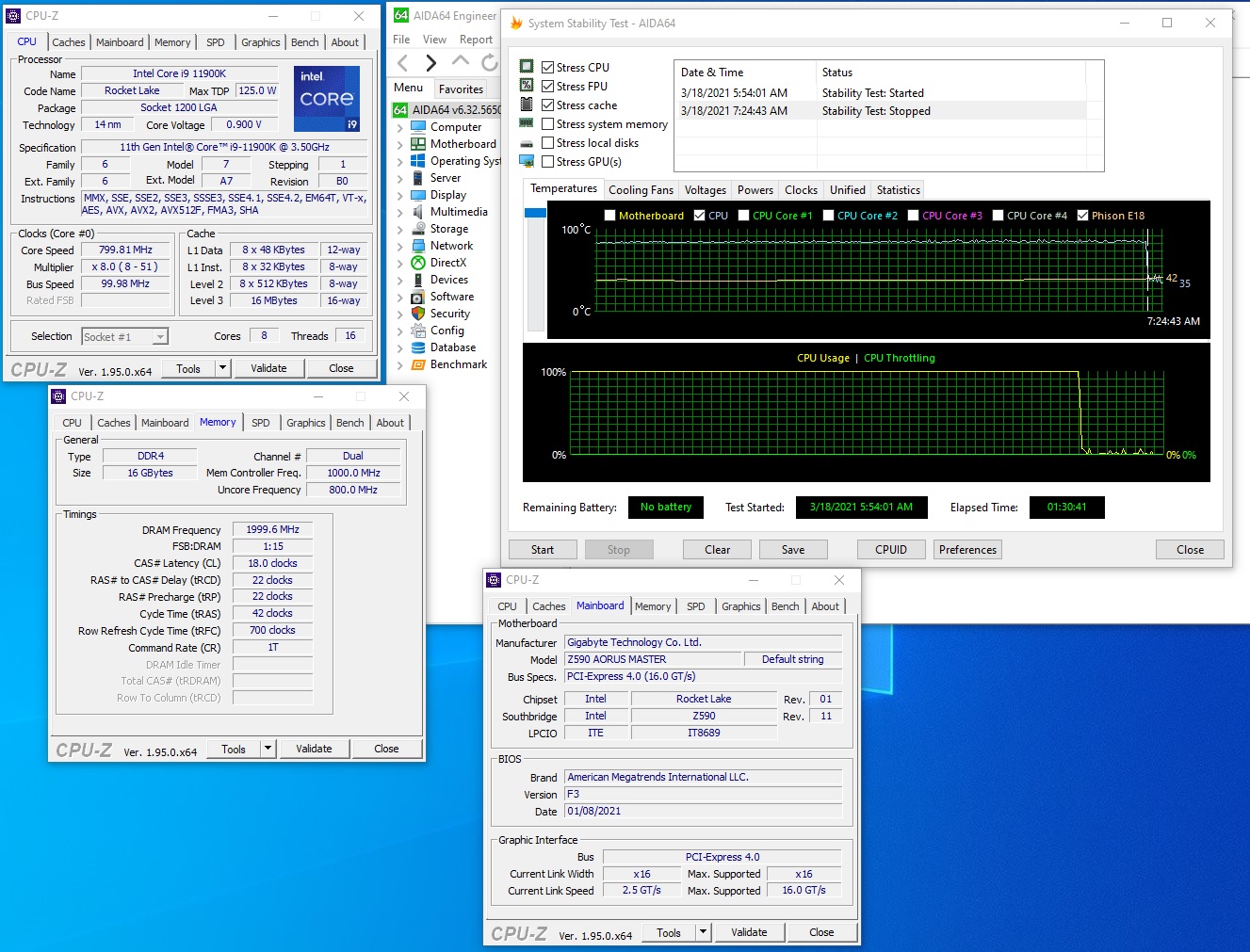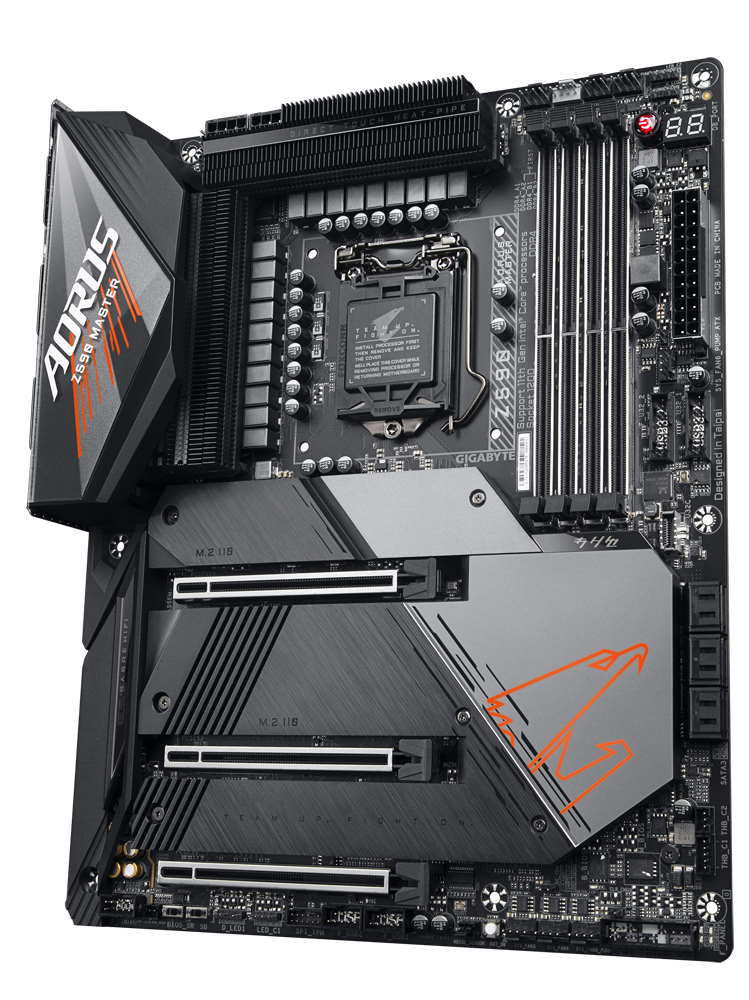Why you can trust Tom's Hardware
Benchmark Results
Our standard benchmarks and power tests are performed using the CPU’s stock frequencies (including stock Thermal Velocity Boost), with all power-saving features enabled. Optimized defaults are set in the BIOS and the memory set using the XMP profiles. For this baseline testing, Windows is set to the balanced power plan.
Synthetic Benchmarks
Synthetics are a great tool to figure out if a board runs out of spec, as identical settings should produce similar performance results. Advanced memory timings are the one place where motherboard makers can still optimize for either stability or performance, though, and those settings can impact some testing.


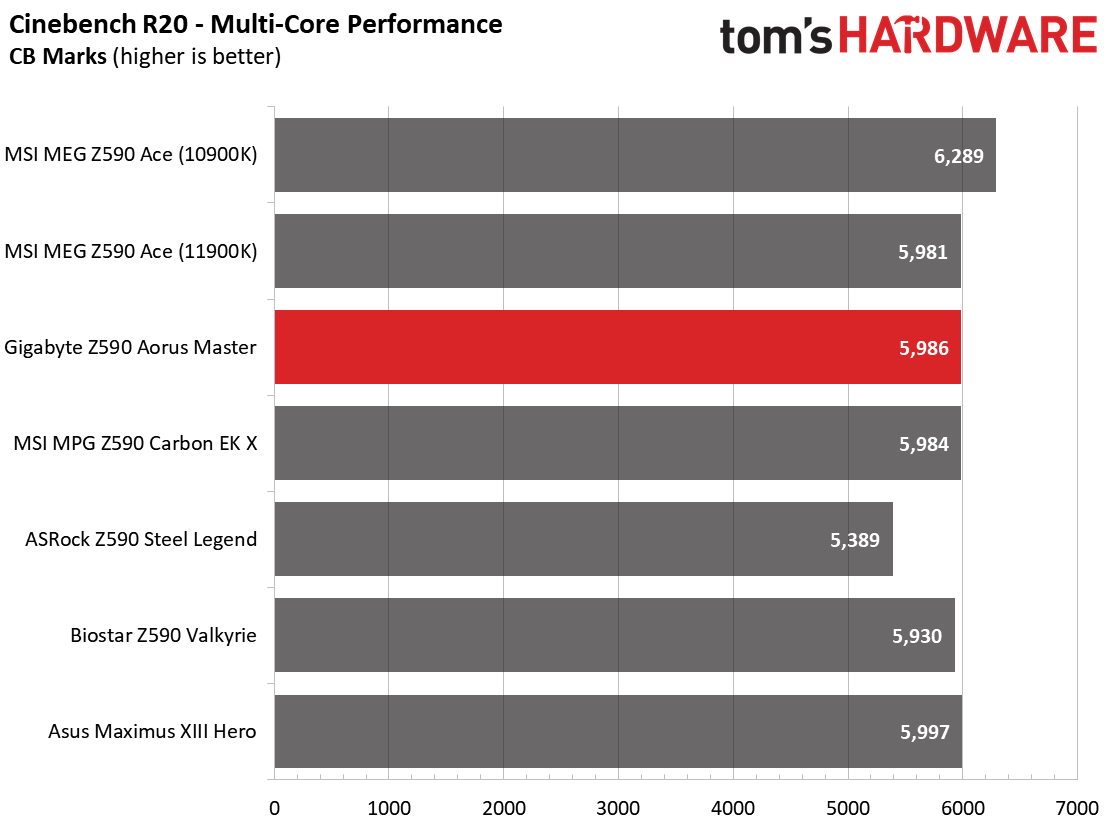
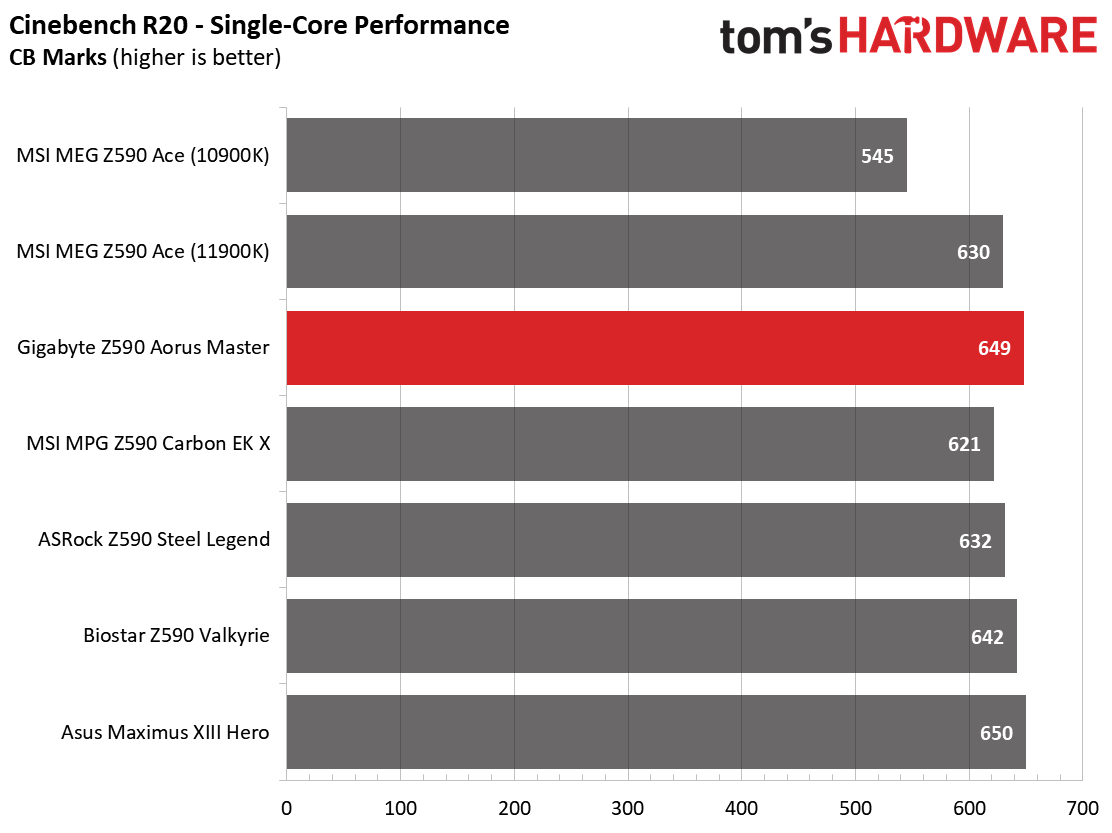
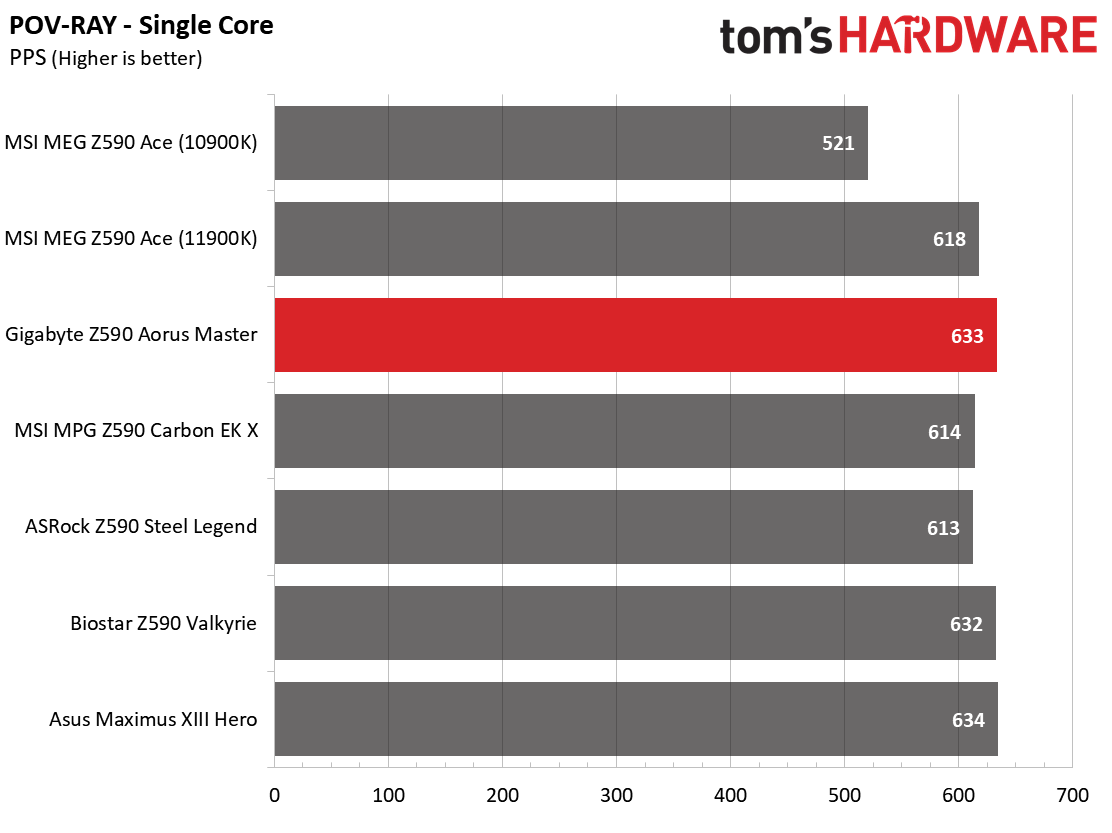


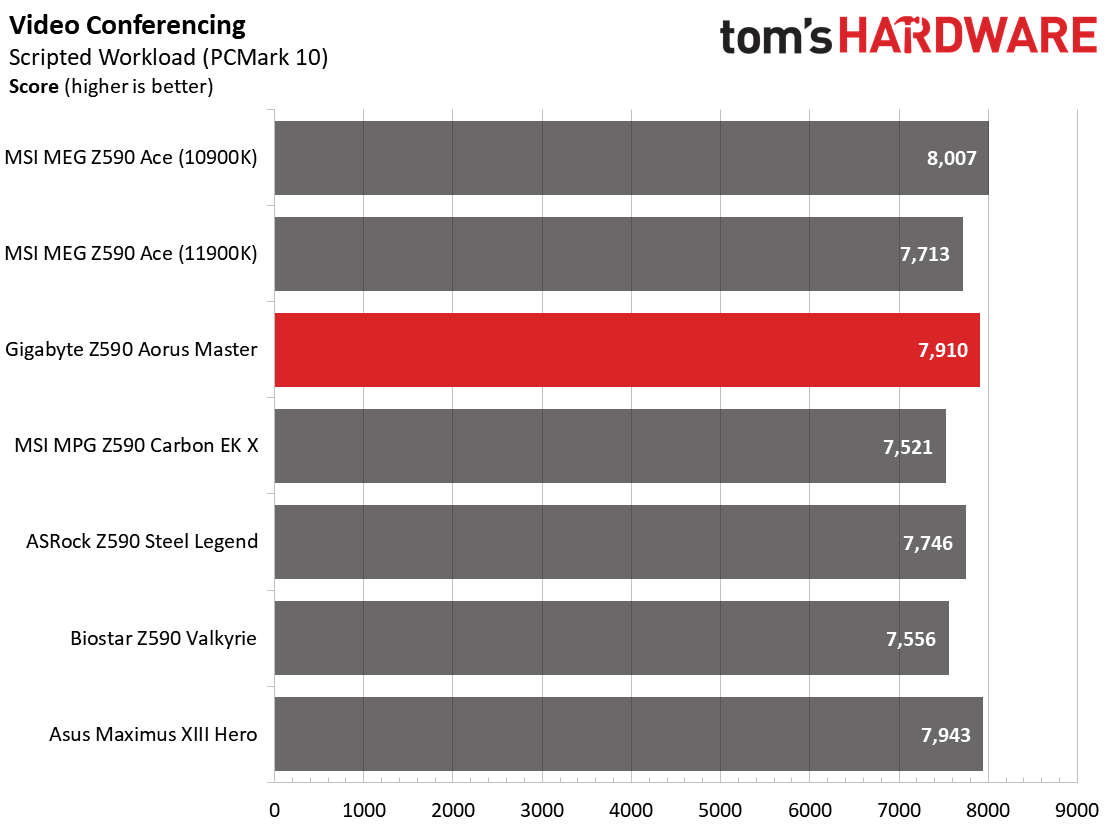


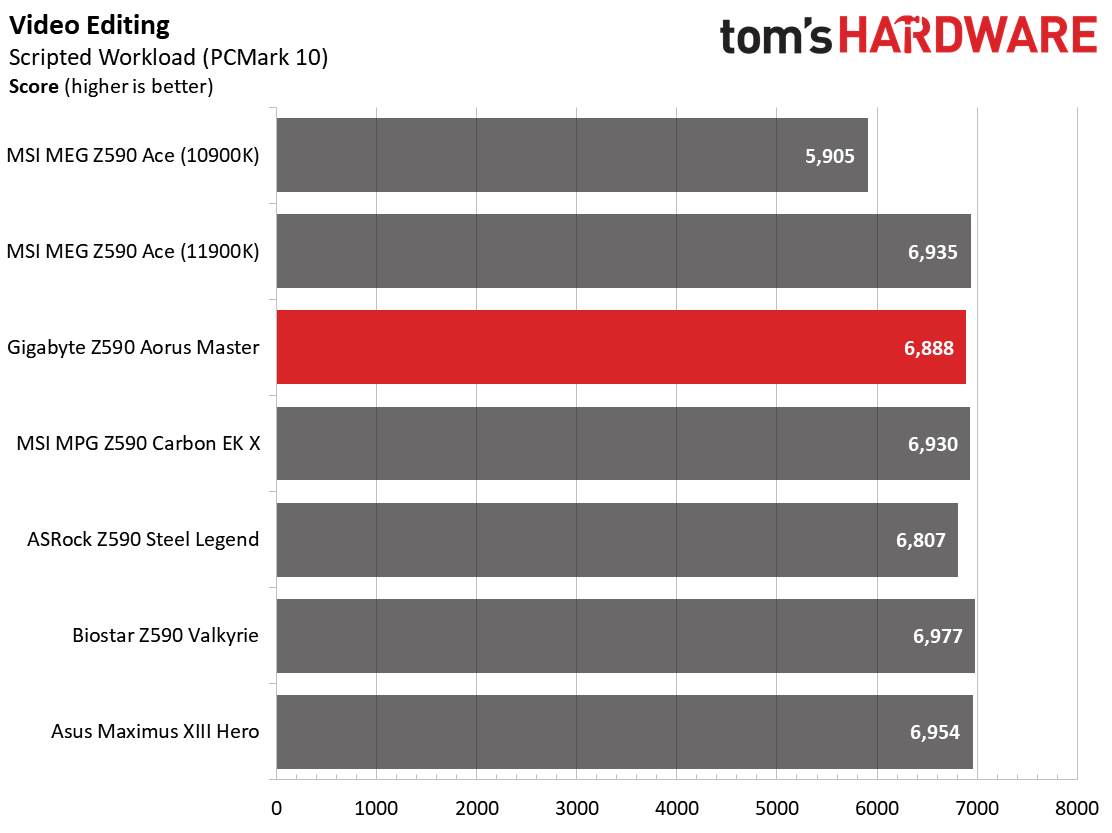
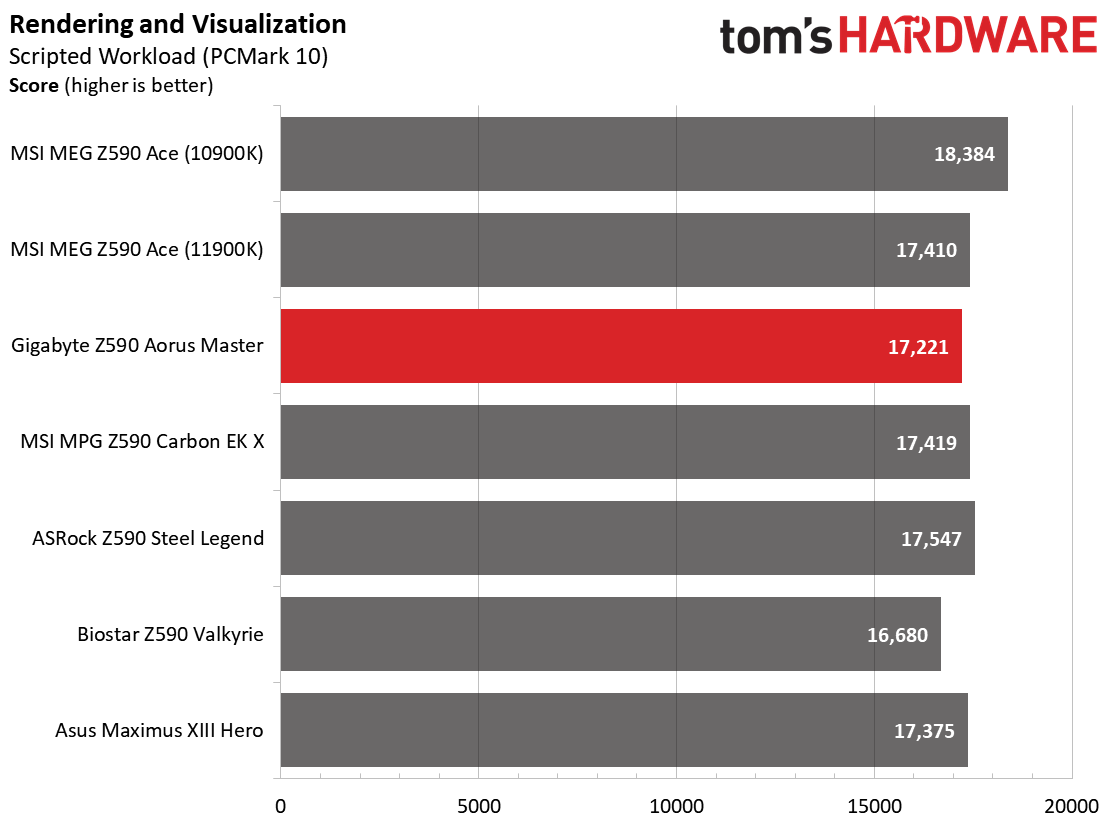
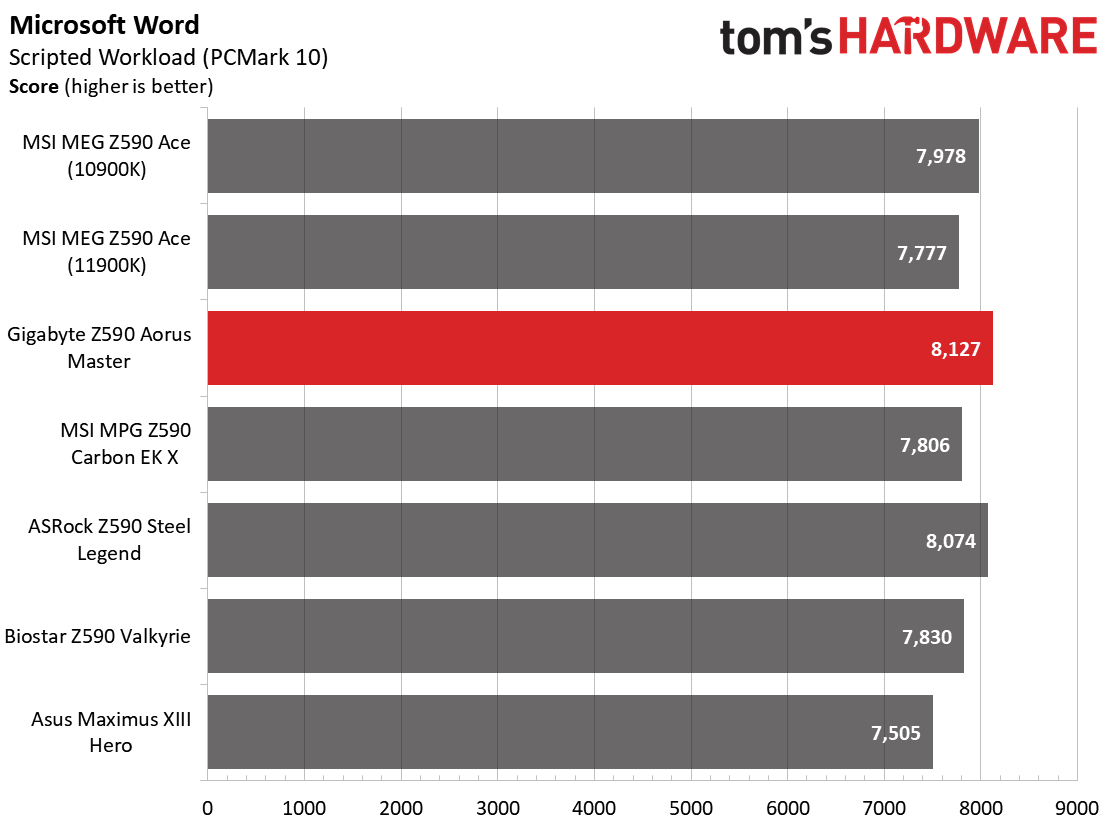
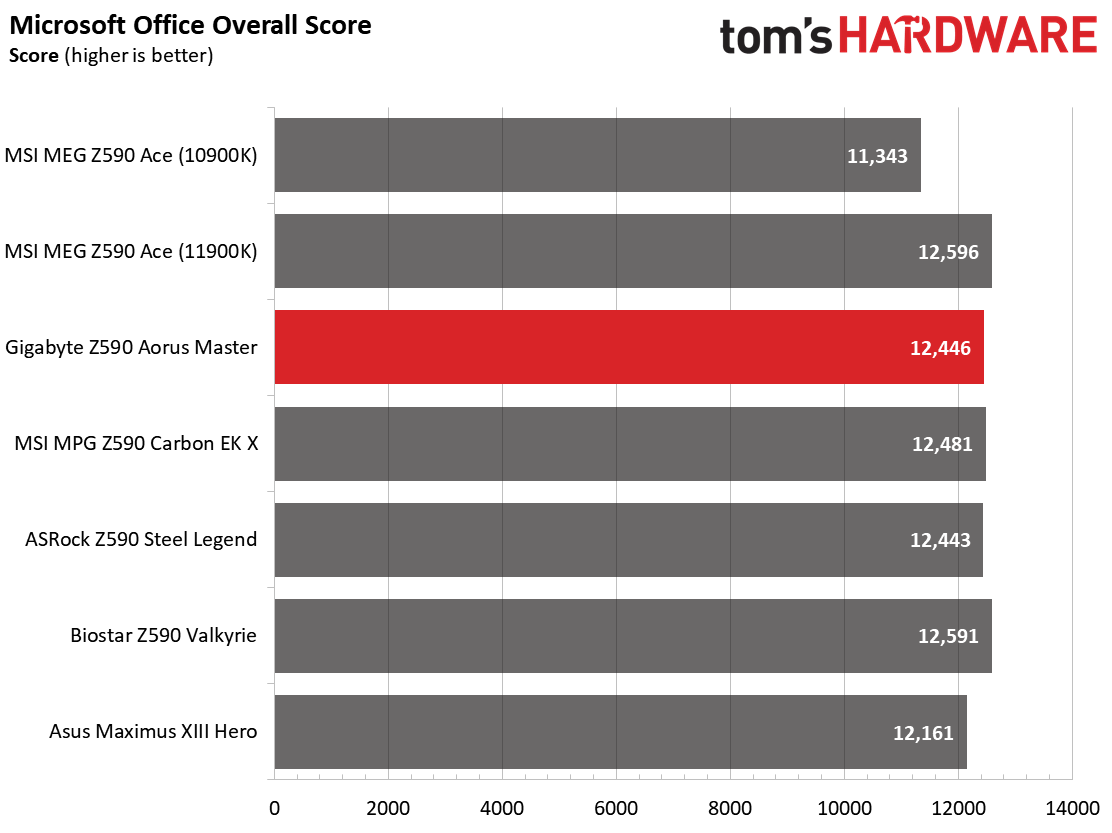


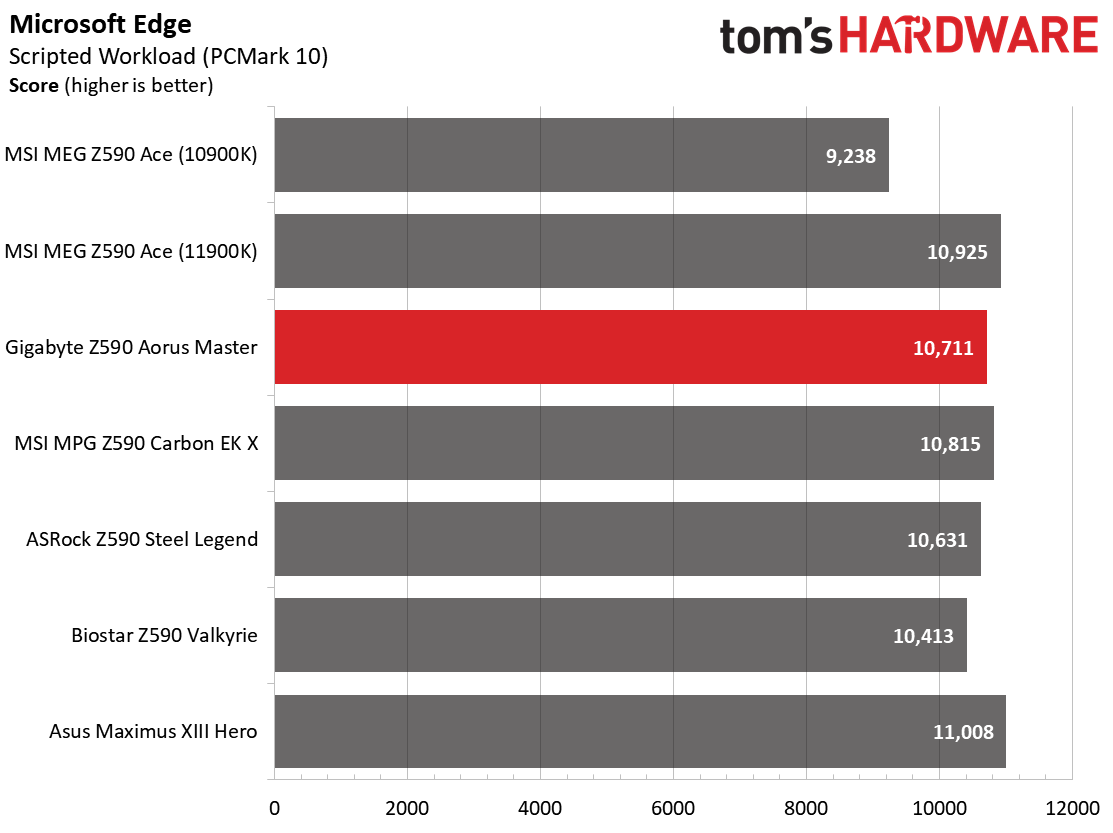
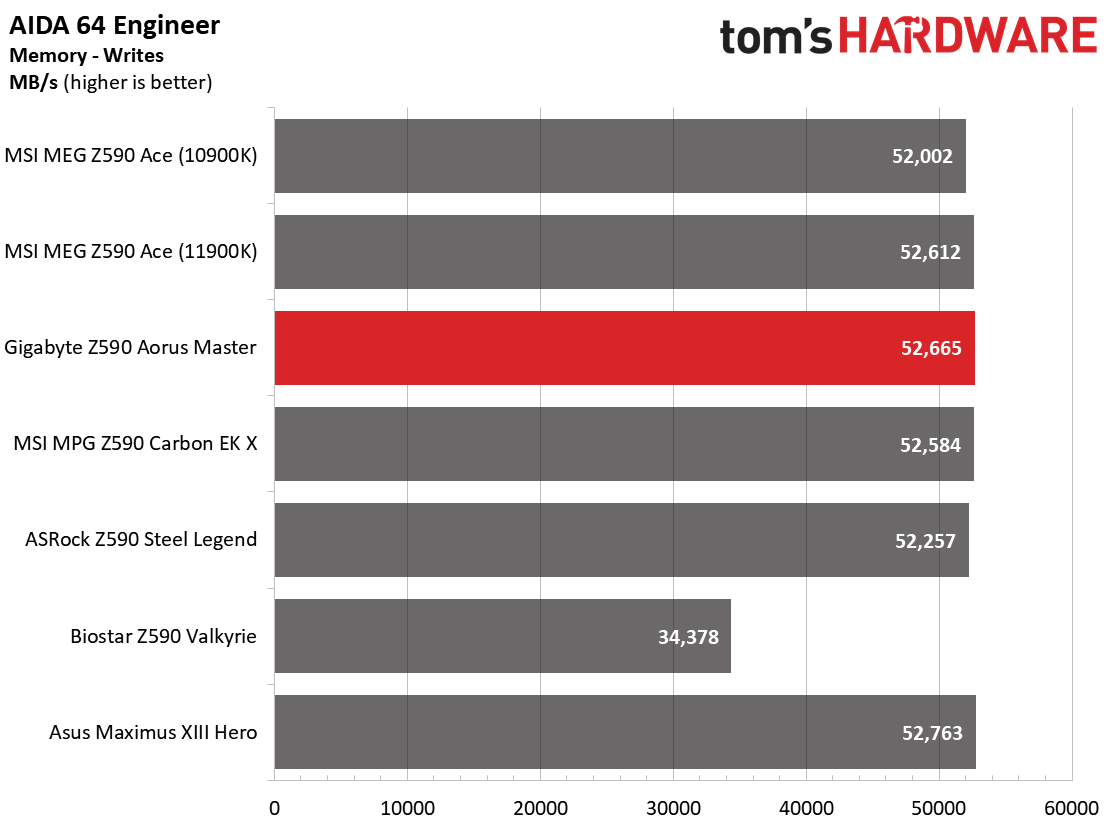



Performance in the synthetic benchmarks was again spot on compared to the boards we’ve tested so far. The Aorus Master was in the thick of things throughout all synthetics tests. Like most boards we’ve looked at so far, the Aorus Master goes above and beyond the stock intel limits and did so without any issues during our testing.
Timed Applications
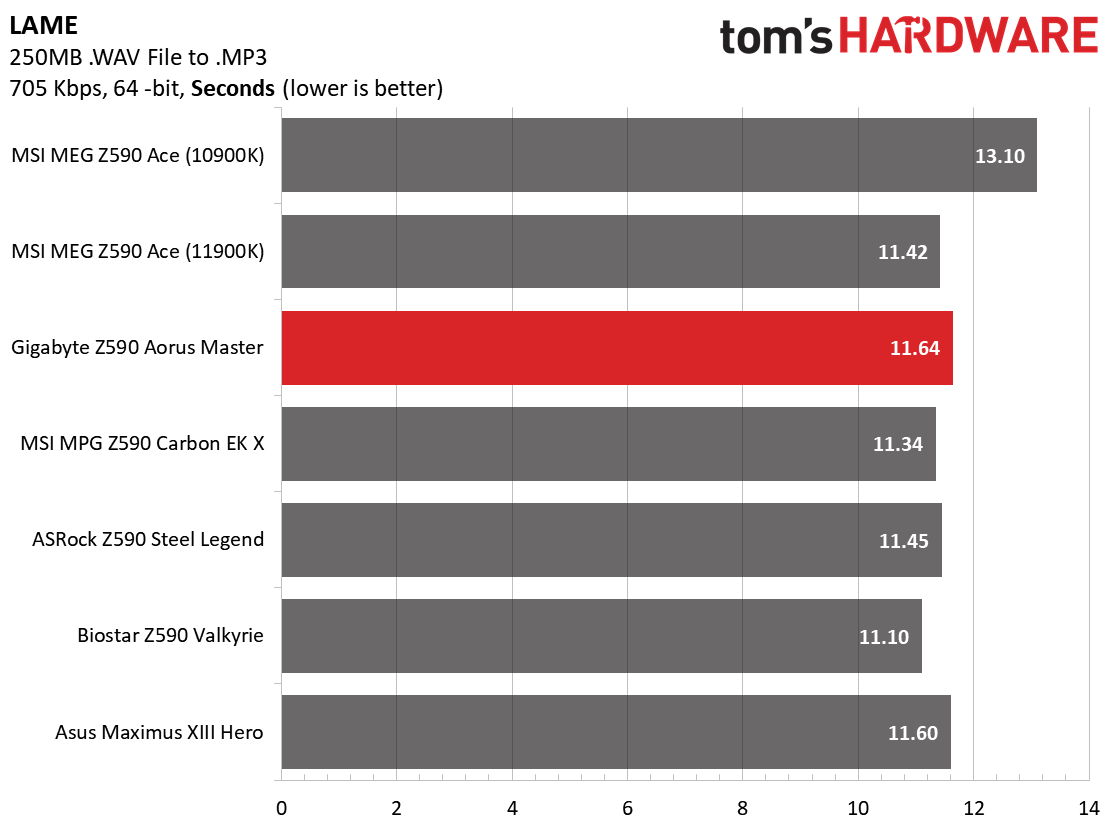
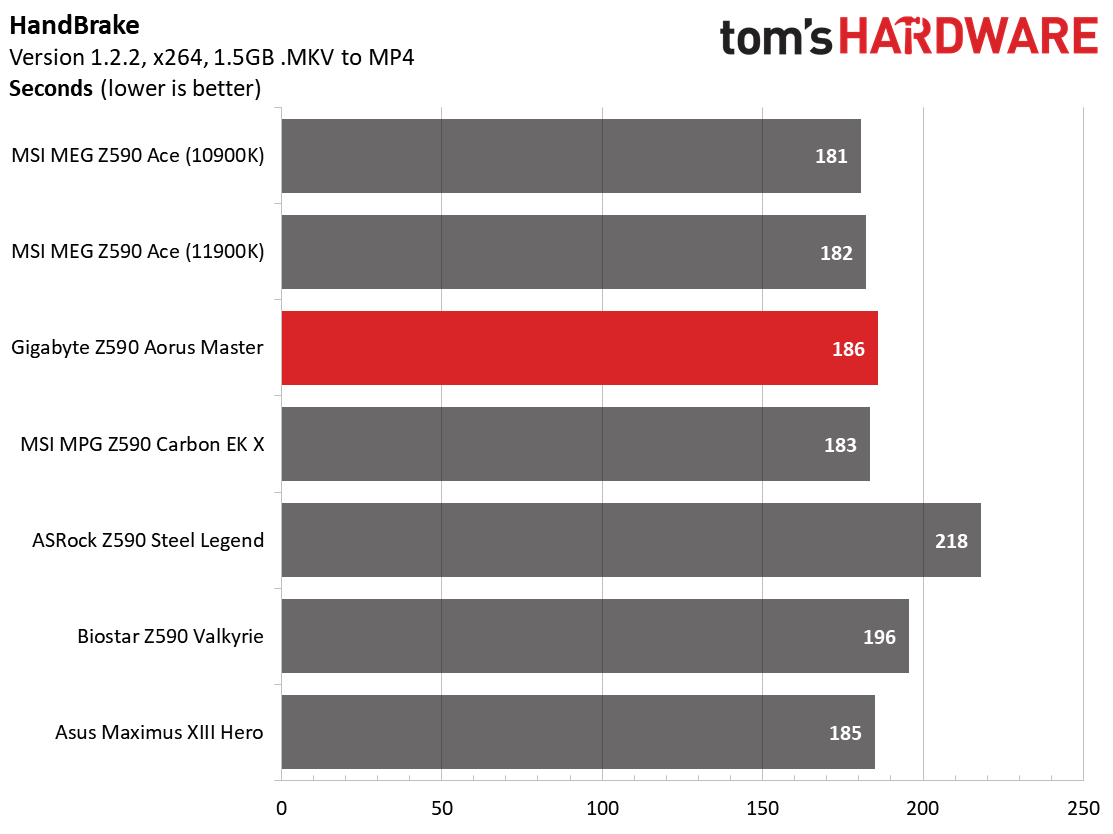
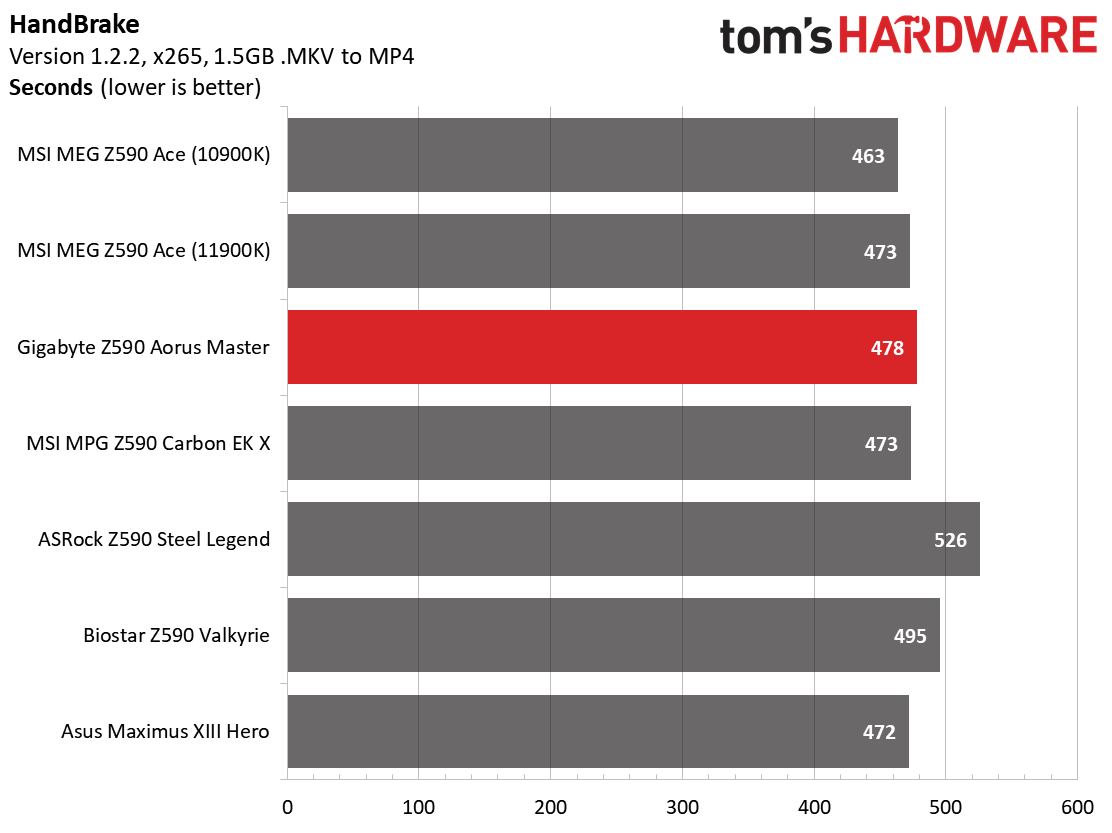
LAME testing shows the Aorus Master as the slowest result so far, at 11.64 seconds--though not by much. The average for this benchmark when using the i9-11900K is somewhere around the 11.4-second range. On the other hand, Corona results matched the fastest times we’ve seen so far with this CPU at 82 seconds.
3D Games and 3DMark

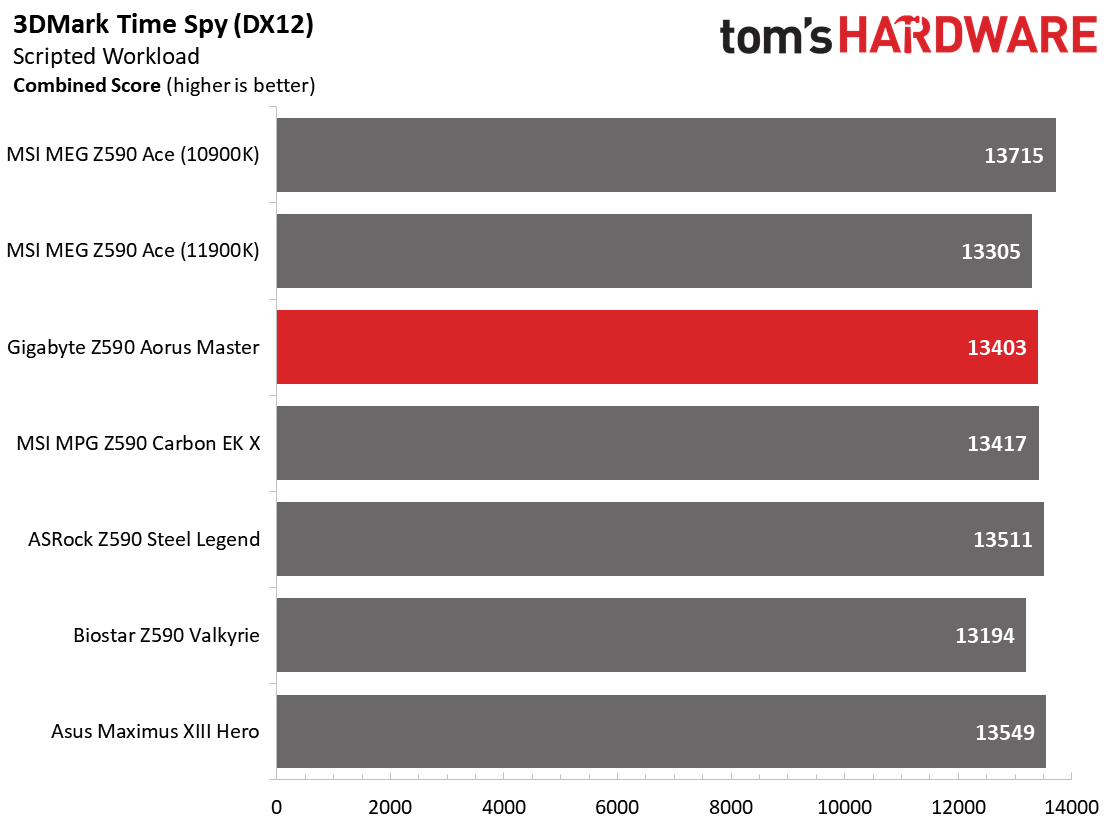
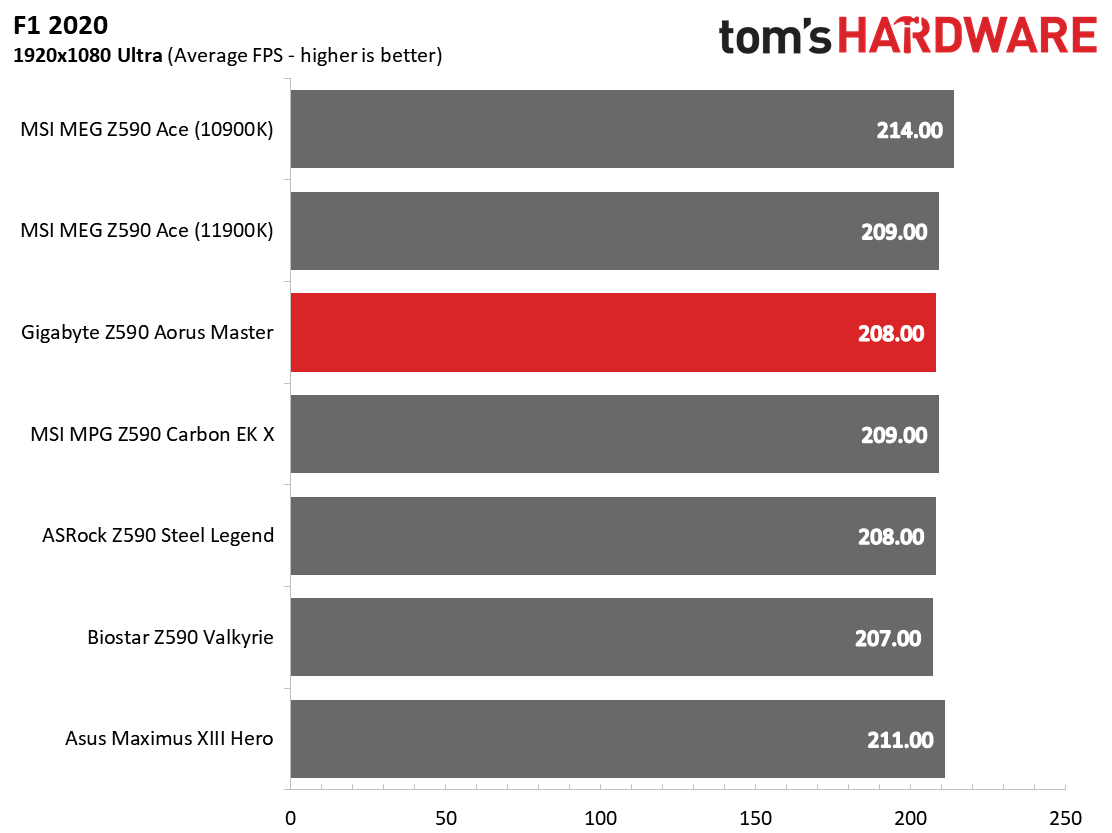

We’ve recently updated our game tests to F1 2020 and Far Cry: New Dawn. The games run at 1920x1080 resolution using the Ultra preset. As the resolution goes up, the CPU tends to have less of an impact. The goal with these settings is to determine if there are differences in performance at the most commonly used resolution with settings most people use or at least strive for.
Our synthetic graphic tests, 3DMark Time Spy and Fire Strike, continued the theme of not standing out among its peers. Our Z590 Aorus Master matched the other tested boards closely as expected. In F1 2020, the system averaged 208 frames per second (FPS). Far Cry: New Dawn averaged 144 FPS, right in the thick of things versus the other Z590 motherboards we’ve tested.
Power Consumption / VRM Temperatures
For power testing, we used AIDA64’s System Stability Test with Stress CPU, FPU and Cache enabled, using the peak power consumption value. With Rocket Lake, we need to disable AVX-512 instruction sets otherwise, temperatures are out of control at stock speeds on some boards. The wattage reading is from the wall via a Kill-A-Watt meter to capture the entire ecosystem. The only variable that changes is the motherboard; all other parts are the same.
Get Tom's Hardware's best news and in-depth reviews, straight to your inbox.
Power use on the MSI MPG Z590 Carbon EK X was a tale of two states. Unlike the MSI MPG Z590 Carbon EK X, which sipped on power at idle and used the most at load, the Z590 Aorus Master used 73 Watts at idle, which is on the higher side. The Gigabyte board also used 260 Watts under load, which is on the lower side. When averaged out, that comes to 167W, the third-highest average so far.
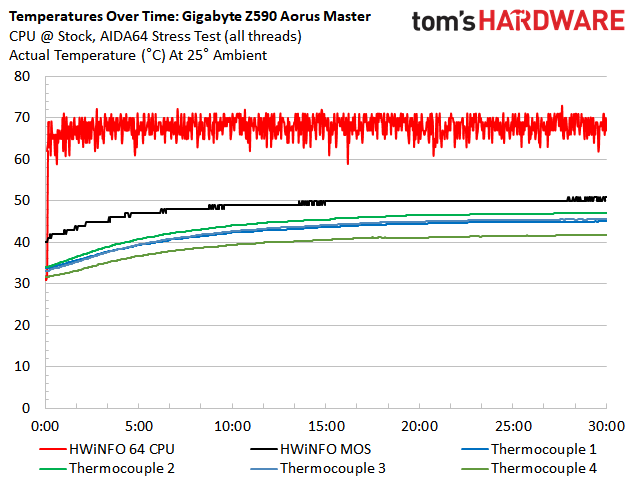

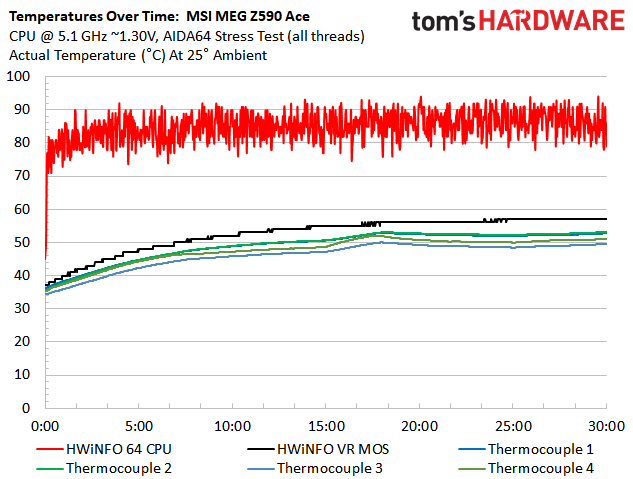
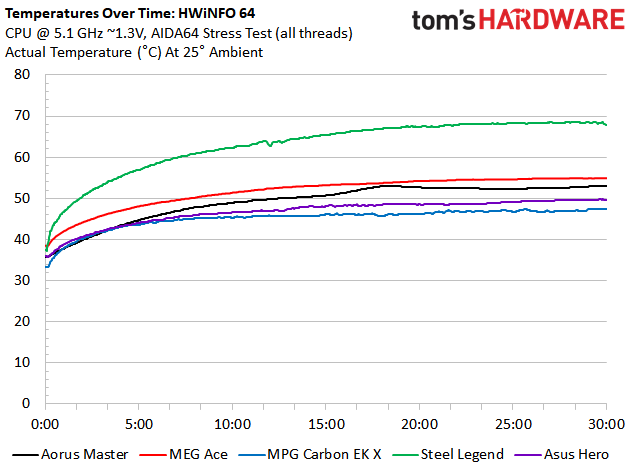
Gigabyte’s robust 90A VRMs handled the i9-11900K with aplomb at both stock and overclocked settings. Outside of the water-cooled Carbon EK X, this is one of the coolest-running VRMs around. The active fan hidden under the IO shroud helps keep things cool and does so without intrusive noise, although it is audible if your other high-end components aren’t drowning it out. Temperatures peaked around 48 degrees Celsius at default settings and about 54 degrees Celsius when running at 5.1 GHz. If you’re wondering what the quick temperature bump is in the middle of the test, the system fan that sits on the benching station fell off. I caught it a couple of minutes later.
Overclocking
When overclocking the i9-11900K, we decided to do so by testing without AVX-512 instructions. When you unlock all of the power limits, you’re thermally limited, with the CPU reaching 100 degrees Celsius in several seconds. Since every board is different in terms of how they follow (or don’t follow) Intel specifications, we’ve removed that variable. The bottom line is that if you need to use these instructions, you’ll need to set a significant offset compared to non-AVX-512 loads. To that end, we settled on a 5.1 GHz overclock at around 1.3V. Our CPU uses around 225W in this configuration, which lands between stock power use (195W) and AVX-512 power use (~265W) and is the end of the line due to thermal constraints.
Overclocking on the Z590 Aorus Master was met with little fanfare. The BIOS puts most items you’d need to change in one place, so you don’t have to dig down in other sections to find the option you’re looking for. We used the ‘Extreme’ setting for LLC, which eliminated what little vdroop we observed. Just be sure to disable the TVB functions in the BIOS to get the clock speeds to stick.
On the memory front, the Z590 Aorus Master ran our DDR4 3600 sticks at 1:1 ratio (Gear 1) and didn’t have any issues with the DDR4 4000 kit. As expected, the latter ran at a 1:2 ratio. This motherboard also includes memory gear options, unlike a couple of other boards that leave it up to BIOS programming. We expect an updated BIOS at some point to add those options on boards that do not have them currently.
Final Thoughts
The Gigabyte Z590 Aorus Master is a well-rounded solution, bringing many premium features to the table. Baked into the chipset is USB 3.2 Gen2x2 support. And on the network side, a 10 GbE port and Intel’s Wi-Fi 6E AX210 card are basically the best you can get out of the box. The 90A 18-phase VRM for the processor does not have any issues with an overclocked Comet-Lake CPU, and the new Rocket-Lake CPUs at the same TDP didn’t have a problem. This board can be used for sub-ambient overclocking, although the Gigabyte Z590 Tachyon is the purpose-built board by Gigabyte for such a thing.
Performance with this motherboard compared to the others we’ve tested so far was spot on, easily mixing in with the results of competing boards. The Aorus Master took our CPU to 5.1 GHz, where it was limited only by the AIO cooling solution we use. We turned up the memory to DDR4 4000, which worked without issue. As expected, this yields a 1:2 ratio to the memory speed, whereas at stock for the other sticks, DDR4 3600 ran at 1:1.
Since Z590 added native PCIe 4.0 support (with Rocket Lake CPUs only) and additional PCIe lanes, we’ll see more boards with up to three M.2 sockets, just like the less-expensive Steel Legend has. The Aorus Master sports one PCIe 4.0 x4 (64 Gbps) slot and two PCIe 3.0 x4 (32 Gbps) slots. Add to that the six SATA ports and nearly everyone’s storage needs should be covered. The 10 USB ports on the rear IO include a USB 3.2 Gen2x2 Type-C port and should be plenty for most users.
If I had to pick out something that needs improvement, I would like to see more expansion slots. As it stands, there are three full-length PCIe slots, but no x1 slots. The $410 price tag will also put off some users. But with the inclusion of PCIe 4.0, plus tariffs in the US and the usual price increase from generation to generation, it’s par for the upper mid-range course for modern motherboards.
Compared to similarly priced peers (think ASRock Z590 Taichi, MSI MEG Z590 Unify and the Asus ROG Strix Z590-E Gaming WiFi ), the Gigabyte Aorus Z590 Master covers all the bases. If you prefer the latest audio codec and four M.2 sockets, instead of three, the Asus Z590-E Gaming has you taken care of. If you need ultra-fast networking, Gigabyte has you covered with its 10 GbE. All of the comparable boards are certainly capable and include quite a bit of features at this price point, so it comes down to the price, appearance, and features you need.
In the end, The Gigabyte Aorus Z590 Master is, like most Z590 motherboards, an iterative update from Z490. You get Rocket Lake support out of the box, superior power delivery, ultra-fast networking, and a premium appearance. If you’re looking for a Z590 motherboard around the $400 price point, The Aorus Master should be on your shortlist.
MORE: Best Motherboards
MORE: How To Choose A Motherboard
MORE: All Motherboard Content

Joe Shields is a staff writer at Tom’s Hardware. He reviews motherboards and PC components.
